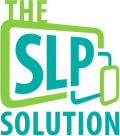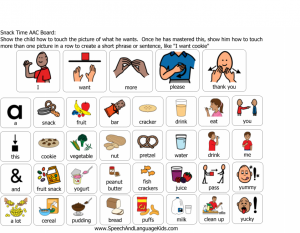Snack Time AAC Activity
Description: Snack time is one of my favorite times to try introducing AAC to a child. For the most part, children are more willing to sit still when they’re being given food. And they’re often highly motivated to get it. I like to start with a simple snack time board like this when I’m trialing AAC systems to see what works for a child. This is a cheap way to see what the child can do! Print off a simple board like this and then take a larger piece of paper and cut a hole that is the size of the button that represents the child’s snack that day. Use the paper to cover up everything except the correct picture and encourage the child to point to the picture in order to get the snack. Make sure that for this activity you only give the child one small bit of snack at a time. You want to provide opportunities for a lot of repetitions. Once the child can do it with the paper covering everything else, try uncovering the board and see if he can still find the right picture. If he’s doing well with that, you can help him form a full sentence by pointing to “I want ___”. Or, you can expand use of the board by saying “is this yummy or yucky” while pointing to the appropriate pictures. This wouldn’t work for a long-term AAC solution since you want the child to be able to communicate about more than just snack. But it will give you an idea of how the child does with finding pictures and remembering how to use them. You can download our sample snack board above by clicking the link below. Or, make your own!
Click Here to Join the Membership and Download this Activity Right Now!


